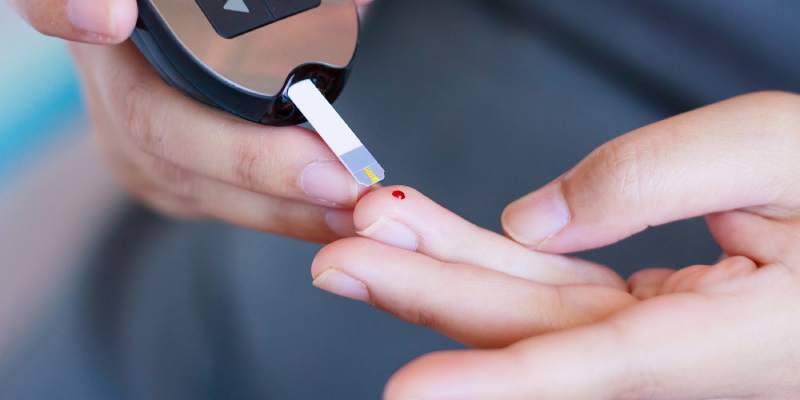Introduction
Hypoglycemia, or low blood sugar, can be a dangerous condition, especially for those managing diabetes. It can occur suddenly, leading to symptoms like dizziness, confusion, and fatigue. In severe cases, hypoglycemia can result in loss of consciousness or seizures. However, with proper planning and care, hypoglycemia can be prevented. In this article, we’ll explore the best practices for maintaining healthy blood sugar levels and avoiding hypoglycemic episodes.
1. Understanding Hypoglycemia: What Happens to Your Body?
- What is Hypoglycemia?: Hypoglycemia occurs when blood glucose levels drop below normal, typically below 70 mg/dL. It can happen for various reasons, including missed meals, excessive insulin, or intense physical activity.
- Symptoms of Hypoglycemia: Common symptoms include shakiness, sweating, dizziness, confusion, and irritability. In severe cases, it can lead to seizures or unconsciousness.
- How Insulin and Glucose Work: Insulin helps regulate blood sugar levels, and when there’s too much insulin in the body or insufficient glucose, blood sugar can drop too low.
2. Best Practices to Prevent Hypoglycemia
- Monitor Blood Sugar Regularly:
One of the most effective ways to prevent hypoglycemia is by regularly checking blood sugar levels. By understanding your blood glucose patterns, you can adjust your diet, medication, or insulin use accordingly to avoid low blood sugar levels.
- How to Monitor: Use a blood glucose meter or continuous glucose monitor (CGM) to keep track of your readings throughout the day, especially before meals and exercise.
- Follow a Consistent Eating Schedule:
Regular meals and snacks help maintain steady blood sugar levels. Skipping meals or going too long without eating can cause blood sugar to drop.
- Plan Balanced Meals: Include a mix of carbohydrates, protein, and healthy fats in every meal. Carbohydrates help raise blood sugar, while protein and fats help stabilize it.
- Don’t Skip Snacks: If you’re on insulin or certain diabetes medications, keep snacks handy to prevent a dip in blood sugar between meals.
- Choose Low-Glycemic Carbohydrates:
Foods with a low glycemic index (GI) are digested and absorbed more slowly, which helps maintain steady blood sugar levels.
- Examples of Low-GI Foods: Whole grains, legumes, non-starchy vegetables, and fruits like berries and apples.
- Avoid High-GI Foods: Refined sugars and processed carbohydrates can cause blood sugar spikes and crashes.
- Stay Active, but Avoid Overexertion:
Regular exercise is essential for blood sugar control, but excessive physical activity can lead to hypoglycemia, especially if insulin levels are not adjusted.
- Balance Exercise and Nutrition: If you plan to exercise, make sure to eat a small snack that includes carbohydrates before or after your workout to help prevent low blood sugar.
- Monitor Blood Sugar During Exercise: Keep track of how your body responds to exercise, and make adjustments as necessary.
- Adjust Insulin Doses Carefully:
People on insulin therapy need to adjust their doses based on factors like diet, exercise, and stress levels. Taking too much insulin without adequate food intake is a common cause of hypoglycemia.
- Work with Your Healthcare Provider: Regularly consult your doctor or diabetes care team to fine-tune your insulin regimen.
- Understand Insulin Types: Different types of insulin act at different rates. Rapid-acting insulin can lead to quicker drops in blood sugar, while longer-acting insulins provide a steady release of insulin.
3. How to Handle Hypoglycemia When It Occurs
- Recognize Early Symptoms:
Hypoglycemia can escalate quickly, so it’s important to recognize the symptoms early. If you begin to feel shaky, sweaty, or dizzy, take action immediately.
- Follow the 15-15 Rule:
If your blood sugar is low, treat it by consuming 15 grams of fast-acting carbohydrates (such as glucose tablets, fruit juice, or a regular soda), wait 15 minutes, then recheck your blood sugar. If it’s still low, repeat the process.
- Carry Quick Sugar Sources:
Always have a source of quick sugar with you, like glucose tablets, a small juice box, or a sugary snack. This ensures you can address a blood sugar drop as soon as you notice symptoms.
4. When to Seek Medical Help
- Severe Hypoglycemia:
If someone experiences a severe hypoglycemic episode (unconsciousness or inability to eat or drink), glucagon injections may be necessary to raise blood sugar quickly. Family members and friends should be aware of how to administer glucagon in emergencies.
- Long-Term Management:
If you frequently experience hypoglycemia despite following best practices, it may indicate that your diabetes management plan needs adjustment. Contact your healthcare provider to discuss your symptoms.
Conclusion
Preventing hypoglycemia is an essential aspect of managing diabetes and ensuring overall well-being. By monitoring your blood sugar levels, following a consistent eating schedule, choosing low-GI foods, adjusting insulin doses as needed, and staying active, you can significantly reduce the risk of hypoglycemic episodes. Remember, the key is to stay proactive in managing your blood sugar and to be prepared in case a drop in blood sugar does occur. If you have any concerns or frequent episodes of hypoglycemia, consult with your healthcare provider for personalized advice and adjustments to your treatment plan.

 Diabetology2 weeks ago
Diabetology2 weeks ago
 Diabetology1 week ago
Diabetology1 week ago
 Diabetology5 days ago
Diabetology5 days ago
 Diabetology7 days ago
Diabetology7 days ago
 Diabetology7 days ago
Diabetology7 days ago
 Diabetology3 days ago
Diabetology3 days ago
 Diabetology3 days ago
Diabetology3 days ago
 Diabetology1 day ago
Diabetology1 day ago














